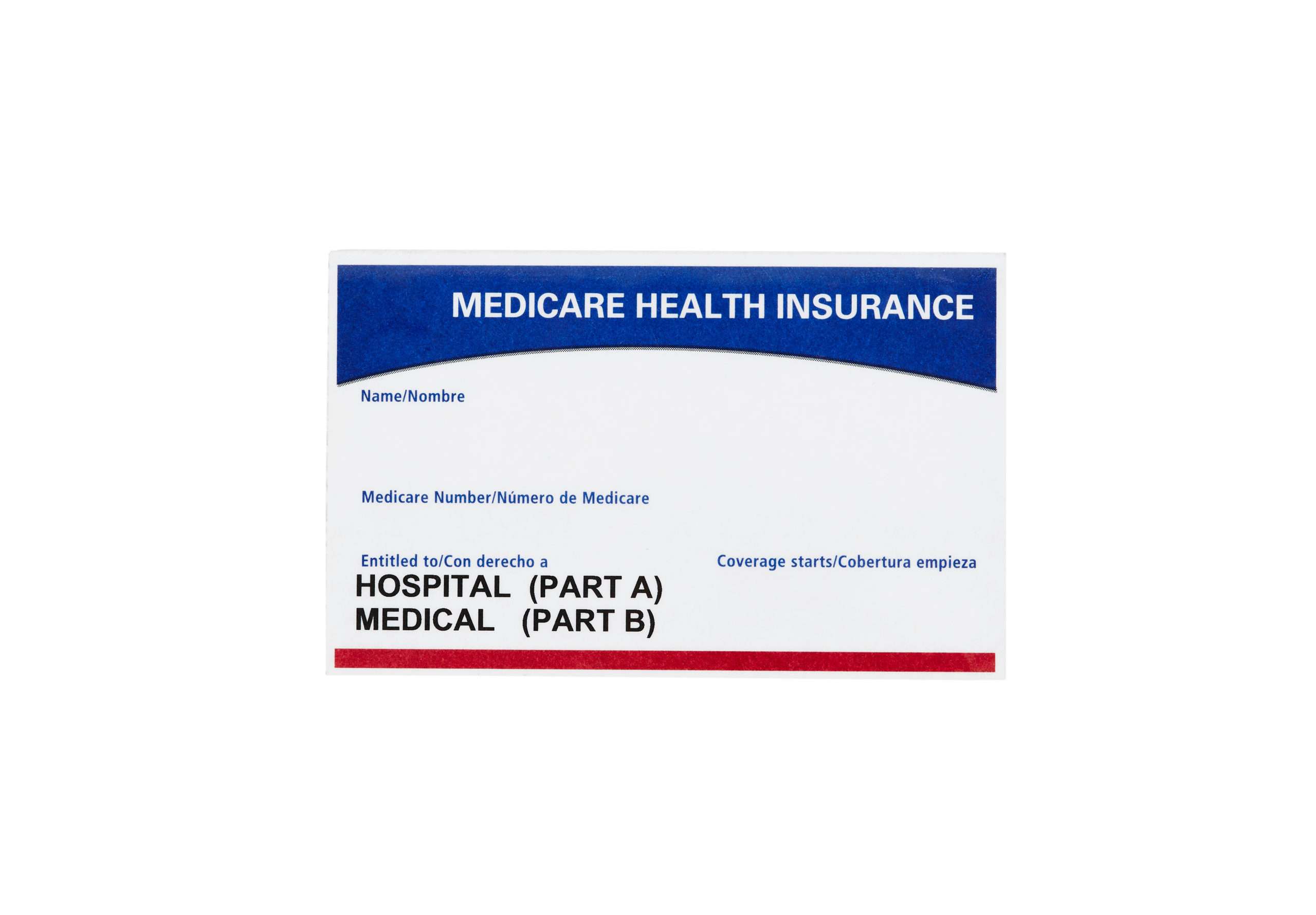Choosing Wisely: Medicare Supplement Plan G vs Plan N
medicare supplement plan g vs plan n
- Medicare Plan G and Plan N both offer substantial coverage benefits, but there are out-of-pocket costs with Plan N.
- Plan G has higher premiums but covers Part B excess charges, while Plan N has lower premiums but does not cover Part B excess charges.
- Plan G provides comprehensive coverage with predictable costs, while Plan N offers cost savings with moderate coverage.
- The choice between Plan G and Plan N on your budget, preference for predictable costs, and the likelihood of incurring Part B excess charges.
- Both plans have their pros and cons, and the best plan for you will depend on your individual needs and financial priorities.
Introduction
Medicare Supplement Plans G and N are pivotal considerations for enhancing Original Medicare coverage. Understanding the nuances between Plan G and Plan N can empower individuals to make informed healthcare decisions. Delving into the specifics of these Medigap policies illuminates the varying levels of coverage and cost-sharing mechanisms associated with each plan. By comparing their features, costs, and coverage details side by side, beneficiaries can tailor their choice to suit their unique healthcare needs. Let’s explore the significance and differentiating factors of Medicare Plan G versus Plan N, including the benefits and costs of Medicare supplement Plan N.
Overview of Medicare Supplement Plans
Medicare supplement plans, also known as Medigap policies, are private health insurance plans designed to cover specific healthcare costs that Original Medicare doesn’t pay for, such as copayments, coinsurance, and deductibles. Plan G and Plan N are popular choices among beneficiaries. These plans provide peace of mind by offering additional benefits like coverage for skilled nursing facility coinsurance and hospice care. Understanding the differences between Plan G and Plan N, including the coverage for out-of-pocket expenses, is crucial in making an informed decision about health insurance for Medicare beneficiaries.
Significance of Plan G and Plan N in Medicare
Medicare Supplement Plan G and Plan N play crucial roles in enhancing original Medicare coverage. They offer beneficiaries a choice to reduce out-of-pocket expenses and enjoy additional benefits, such as coverage for Medicare Part B excess charges through Medicare Assignment. Plan G provides comprehensive coverage, including Part B excess charges, while Plan N covers co-pays like office visits and the Part B deductible. Understanding the significance of these plans, including their coverage for Medicare Part B excess charges, can help individuals make informed choices based on their healthcare needs and budget constraints.
General Eligibility and Enrollment Periods
Medicare supplement plans like Plan G and Plan N are available to individuals enrolled in Original Medicare Parts A and B. To be eligible for these plans, you typically need to be at least 65 years old or have certain disabilities. The best time to enroll is during the Medigap open enrollment period, also known as the Medigap Initial Enrollment Period, which spans six months starting the first day of the month you turn 65 and have Part B. This period offers guaranteed issue rights, ensuring coverage without medical underwriting.
Deep Dive into Medigap Plan G
Medigap Plan G provides extensive coverage, including Part A coinsurance, hospice care, and skilled nursing facility coinsurance. It also covers deductibles for Part A and Part B, as well as foreign travel emergencies. With Plan G, you won’t worry about Part B excess charges. This plan offers peace of mind with predictable out-of-pocket costs. It’s a popular choice for those wanting comprehensive coverage without the need for high out-of-pocket expenses.
Comprehensive Coverage Offered by Plan G
Medicare Plan G provides extensive coverage, including Medicare Part A coinsurance and hospital costs up to an additional 365 days after Medicare benefits end, Part B coinsurance or copayment, blood transfusions, Part A hospice care coinsurance or copayment, and more. It also covers skilled nursing facility care coinsurance, foreign travel emergency care, and the first three pints of blood. With Plan G, you can enjoy comprehensive coverage and peace of mind knowing your medical costs are well taken care of.
Pros and Cons of Choosing Plan G
Plan G offers extensive coverage, including Part A coinsurance and Part B excess charges. With predictable out-of-pocket costs, it provides peace of mind for those who want comprehensive benefits. However, Plan G typically has a higher premium than Plan N. Also, it doesn’t cover the Part B deductible, which is a drawback for some. Considering your health needs and budget is crucial in deciding if the higher coverage and lower unexpected costs of Plan G outweigh its premium.
Understanding Medigap Plan N
Medigap Plan N is a cost-effective option for individuals who want to reduce their monthly premiums while still receiving comprehensive coverage. With Plan N, you will have to pay a small copayment for certain office visits and emergency room visits. However, the copayments are manageable for most beneficiaries, and the lower monthly premiums make Plan N an attractive choice. Plan N covers the same benefits as Plan G, with the exception of the Part B excess charges. It provides coverage for Medicare Part A deductibles, coinsurance, and hospice care.
What Plan N Covers and Its Unique Features
Medigap Plan N offers comprehensive coverage for a range of healthcare expenses not covered by Original Medicare. It covers Medicare Part A deductibles, coinsurance, and hospice care, providing financial protection for inpatient hospital stays and end-of-life care. One unique feature of Plan N is that it requires copayments for certain services. For office visits, you may be responsible for up to a $20 copayment, and for emergency room visits, you may have to pay up to a $50 copayment. These copayments help to lower the monthly premiums of N, making it a more affordable option for those who are willing to share some of costs.
The Advantages and Disadvantages of Plan N
Advantages of Plan N:
- Lower monthly premiums compared to Plan G
- Comprehensive coverage for Medicare Part A deductibles, coinsurance, and hospice care
- Financial protection against high medical costs
- Flexibility to choose any healthcare provider that accepts Medicare
Disadvantages of Plan N:
- Copayments for certain services, including office visits and emergency room visits
- Does not cover the Part B excess charges
- Requires the payment of the Medicare Part B deductible
Overall, Plan N offers a cost-effective option for individuals who are looking to save money on their monthly premiums while still receiving comprehensive coverage. However, it is important to consider the copayments and potential out-of-pocket costs associated with this plan, especially if you anticipate frequent doctor visits or emergency room visits.
Comparing Costs: Plan G vs. Plan N
When comparing the costs of Plan G and Plan N, there are a few factors to consider. Plan G generally has higher monthly premiums than Plan N. However, with Plan G, you will have minimal out-of-pocket expenses once you meet the Medicare Part B deductible. On the other hand, Plan N has lower monthly premiums but requires copayments for certain services. The choice between the two plans depends on your budget and healthcare needs. It is important to evaluate how often you visit the doctor or require emergency room care to determine which plan will provide the most cost savings.
Premiums, Deductibles, and Out-of-Pocket Expenses
When comparing the premiums, deductibles, and out-of-pocket expenses of Plan G and Plan N, it is important to consider your budget and healthcare needs. Plan G typically has higher monthly premiums compared to Plan N. However, Plan G, you have predictability in your healthcare expenses once you meet the Medicare Part B deductible. This means that once you pay the deductible, you are covered 100% for all approved services, leaving you with minimal out-of-pocket costs. On the other hand, Plan N has lower monthly premiums but requires copayments for certain services, such as office visits and emergency room visits. These copayments can vary but are generally manageable for most beneficiaries.
How Costs Vary Based on Location and Provider
The costs of Medicare Supplement Plan G and Plan N can vary based on location and the healthcare provider you choose. Premiums for these plans are set by the insurance companies that offer them, so it is important to compare costs from different companies to find the most affordable option for you. Additionally, some states may have different regulations or restrictions on pricing for Medigap plans. It is also important to consider the financial stability and rating of the insurance company offering the plan to ensure that they can manage claims and provide reliable coverage. Overall, costs for Medicare supplement plans can vary across the United States, so it is important to shop around and compare options before making a decision.
Coverage Details Side by Side
Medicare Supplement Plan G and Plan N offer comprehensive coverage to supplement Original Medicare (Parts A and B). While both plans cover a range of healthcare costs not included in Original Medicare, there are some differences in coverage between the two. Plan G is known for its comprehensive coverage, including coverage for the Part B excess charges. Plan N, on the other hand, requires copayments for certain services but offers lower monthly premiums. Comparing the coverage details side by side can help you determine which Medicare supplement insurance plan, Plan G or Plan N, better suits your healthcare needs and budget.
Similarities in Coverage Between Plan G and Plan N
Medicare Supplement Plan G and Plan N have several similarities in coverage. Both plans cover Medicare Part A deductibles, coinsurance, and hospice care, providing financial protection for inpatient hospital stays and end-of-life care. They also offer coverage for skilled nursing facility care and foreign travel emergency care. These similarities in coverage make both Plan G and Plan N comprehensive options for individuals seeking additional coverage beyond Original Medicare. While there may be differences in copayments and certain services covered, the core benefits provided by both plans can help alleviate healthcare costs and provide peace of mind.
Real-Life Scenarios: Choosing Between Plan G and Plan N
Real-Life Scenarios: Choosing Between Plan G and Plan N
Choosing between Medigap Plan G and Plan N can depend on your individual healthcare needs and financial priorities. Let’s consider some real-life scenarios to help you make an informed decision:
- Peace of Mind vs. Cost Savings:
- If you prioritize comprehensive coverage and peace of mind, Plan G may be the better option. It covers all approved services after the Part B deductible is met, providing predictable costs.
- If you’re looking to save on monthly premiums and are comfortable with sharing some costs through copayments and the Part B deductible, Plan N may be a more cost-effective choice.
- Frequency of Doctor Visits:
- If you anticipate frequent doctor visits and want little to no out-of-pocket costs, Plan G may be more suitable.
- If you don’t visit the doctor often and are willing to pay copayments, Plan N can provide cost savings with lower premiums.
Consider your healthcare usage, financial priorities, and the level of coverage you’re comfortable with when deciding between Plan G and Plan N.
Case Studies Highlighting Best Fit for Different Needs
Case Studies Highlighting Best Fit for Different Needs:
To better understand which plan is the best fit for different needs, let’s consider two case studies:
- Case Study 1: John has a history of chronic health conditions and visits the doctor frequently. He values comprehensive coverage and wants to minimize out-of-pocket costs. In this case, Medigap Plan G would be the better choice for John. It covers all approved services after the Part B deductible, providing him with peace of mind and predictable costs.
- Case Study 2: Sarah is a healthy individual with no significant health issues. She wants to save on monthly premiums and is comfortable with sharing some costs. In this scenario, Medigap Plan N would be a more suitable option for Sarah. Although she will have to pay copayments and the Part B deductible, the lower premiums of Plan N will help her save money.
By considering individual health history, healthcare needs, and financial priorities, you can determine which plan, Plan G or Plan N, best suits your needs for Medicare supplement insurance.
Why Some Prefer Plan G Over Plan N and Vice Versa
Why Some Prefer Plan G Over Plan N and Vice Versa:
There are several reasons why some individuals prefer Medigap Plan G over Plan N, and vice versa:
Reasons to Prefer Plan G:
- Peace of Mind: Plan G offers comprehensive coverage, providing individuals with peace of mind knowing that most of their healthcare expenses will be covered.
- No Copayments: Plan G does not require copayments for certain doctor visits or emergency room visits, making it convenient for those who want to avoid additional out-of-pocket costs.
- Protection Against Excess Charges: Plan G covers Part B excess charges, ensuring complete protection if you encounter healthcare providers who charge more than the Medicare-approved amount.
- No Network Restrictions: With Plan G, you can see any healthcare provider who accepts Medicare, giving you the flexibility to choose your doctors and specialists.
Reasons to Prefer Plan N:
- Cost Savings: Plan N generally has lower monthly premiums than Plan G, making it a more budget-friendly option for those looking to save on healthcare costs.
- Willingness to Pay Copayments: Plan N requires copayments for certain doctor visits and emergency room visits, but for many beneficiaries, these costs are manageable and offset by the savings on monthly premiums.
- No Part B Excess Charges: While Plan N does not cover Part B excess charges, if you live in a state that prohibits these charges or you are not likely to encounter providers who charge more than the Medicare-approved amount, this may not be a concern for you.
Ultimately, the choice between Plan G and Plan N depends on individual preferences, healthcare needs, and financial considerations. It’s important to weigh the benefits and drawbacks of each plan to make an informed decision.
The Impact of High Deductible Plan G
The Impact of High Deductible Plan G:
High Deductible Plan G is an alternate option for those who want lower monthly premiums but are willing to pay a higher deductible. With this plan, you’ll need to pay the annual deductible (which can change from year to year) before your coverage kicks in. Once you meet the deductible, High Deductible Plan G provides the same comprehensive coverage as regular Plan G. This option is suited for individuals who are generally healthy, have fewer medical expenses, and are comfortable with a higher deductible in exchange for lower monthly premiums.
Exploring the High Deductible Option for Plan G
Exploring the High Deductible Option for Plan G:
High Deductible Plan G is a variation of G that offers lower monthly premiums in exchange for a higher deductible. This option allows individuals to take advantage of the comprehensive coverage of Plan G while managing their healthcare costs.
The high deductible for Plan G can vary from year to year. Once the deductible is met, the plan provides the same coverage as a regular Plan G, including coverage for Medicare Part A and B coinsurance, hospice care, skilled nursing facility care, and more.
This option is ideal for individuals who are generally healthy, have fewer medical expenses, and are comfortable with the higher deductible. By choosing the high deductible option for Plan G, individuals can enjoy the benefits of comprehensive coverage while saving on their monthly premiums.
Who Benefits Most from High Deductible Plan G
Who Benefits Most from High Deductible Plan G:
High Deductible Plan G is particularly beneficial for individuals who are in good health, have few medical expenses, and are comfortable with a higher deductible. Here are some scenarios where High Deductible Plan G can be the right choice:
- Young and Healthy Individuals: If you are younger and have minimal healthcare needs, High Deductible Plan G can provide you with comprehensive coverage at a lower monthly premium. This allows you to save money while still having coverage for unexpected healthcare expenses.
- Individuals with Limited Medical Expenses: If you rarely visit the doctor or have few medical expenses throughout the year, High Deductible Plan G can be a cost-effective option. The lower monthly premiums can help you save money, and the high deductible may not be a concern if you rarely reach it.
- Those Seeking Peace of Mind: Even with a higher deductible, High Deductible Plan G offers the same comprehensive coverage as regular Plan G once the deductible is met This can provide individuals with peace of mind knowing that they have coverage for major medical expenses.
By considering your health status, medical needs, and budget, you can determine if High Deductible Plan G is the right choice for you.
Conclusion
In conclusion, understanding the differences between Medicare Plan G and Plan N is crucial for making informed decisions about your healthcare coverage. While Plan G offers comprehensive benefits with predictable out-of-pocket costs, Plan N provides slightly lower premiums with some cost-sharing. Consider your healthcare needs, budget, and preferences to choose the plan that best suits you. Additionally, stay informed about any policy changes that may impact your coverage choices in the future. Making the right decision now can ensure peace of mind and financial stability as you navigate your Medicare options.
Frequently Asked Questions
Can I Switch from Plan N to Plan G or Vice Versa?
5.
What Happens If My Healthcare Needs Change?
7.
Are Plan G and Plan N Affected by Medicare Policy Changes?
9.
How do the costs compare between Medicare Plan G and Plan N?
When comparing the costs of Medicare Plan G and Plan N, it’s important to consider the monthly premium, as well as the potential out-of-pocket expenses for medical services. Plan G generally has higher premiums but offers more comprehensive coverage with minimal out-of-pocket costs. On the other hand, Plan N has lower premiums but requires copayments for certain services.


















